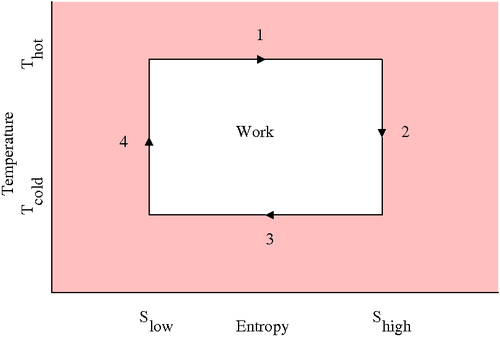Carnot cycle
Jump to navigation
Jump to search
The Carnot cycle is a hypothetical cycle in which the efficiency is a maximum. It was proposed by Nicolas Léonard Sadi Carnot [1]. The Carnot cycle consists of four distinct operations:
- A reversible isothermal expansion of the gas at the "hot" temperature, THot
- An isentropic reversible adiabatic expansion of the gas
- A reversible isothermal compression of the gas at the "cold" temperature, TCold
- Finally an isentropic compression of the gas
See also[edit]
References[edit]
- ↑ Nicolas Léonard Sadi Carnot "Reflexions sur la Puissance Motrice de Feu et sur les Machines Propres a Développer cette Puissance" (1824), printed in Annales scientifiques de l'École Normale Supérieure Sér. 2, 1 pp. 393-457 (1872)
